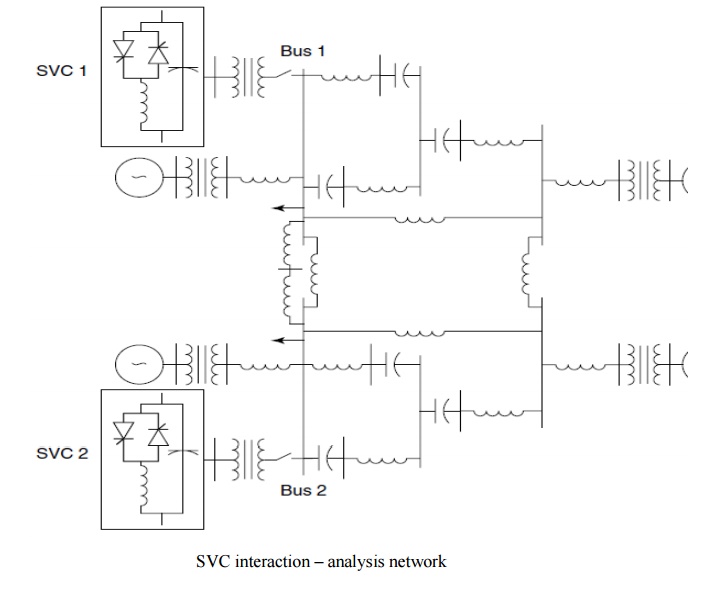Chapter: Flexible Alternating Current Transmission System : Co-Ordination of FACTS Controllers
SVC-SVC Interactions
SVC – SVC Interactions
The Effect of Electrical Coupling
and Short-Circuit Levels
Ø The
interaction phenomena are investigated as functions of electrical distance
(electrical coupling) between the SVCs and the short-circuit level at the SVC
buses.

1. Uncoupled SVC Buses
Ø A
simplified test system shown in Fig. is considered for the interaction analysis
performed through eigenvalue analyses and root-loci plots.
Ø All the
generating units are represented by infinite buses. If the transfer reactance
between buses 1 and 2 is high, making the buses electrically uncoupled, then
the SVCs connected to those buses do not interact adversely.
Ø Increasing
the proportional gain of SVC 1 connected to bus 1, even to the extent of making
the SVC unstable, does not affect the eigenvalues of SVC 2—implying that the
controller designs of SVCs can be done independently for multiple SVCs in a
power system if the transfer reactance between their connecting buses is high.
2. Coupled SVC Buses
Ø If the
reactance between the two SVC buses is low, it constitutes a case of high
electrical coupling between the SVCs.
Ø Here
again, two ossibilities exist with respect to short-circuit capacity of the
region where the SVCs are installed: the SVC region with a high shortcircuit
capacity and the SVC region with a low short-circuit capacity.
Ø For high
short-circuit capacity conditions in the same system as Fig. reveal that by
increasing the proportional gain of one SVC, the eigenvalues of the other SVC
are impacted very slightly. Almost no control interaction exists between the
two SVCs irrespective of their electrical coupling, as long as they are in a
high short-circuit-level region, that is, when the ac system is stiff.
Ø The
reason for this condition is that the interlinking variable between the two
SVCs is the bus voltage.
Ø Thus the
controls of both SVCs can be independently designed and optimized, but if the
short-circuit capacity of the SVC region is low, varying the proportional gain
of SVC 1 will strongly influence the eigenvalues associated with SVC 2.
Ø Therefore
imperative that a coordinated control design be undertaken for both SVCs.
Ø Despite
simplifications in the study system and in the analysis approach, the
aforementioned interaction results are general, for the phenomena investigated
are independent of the number of buses, transmission lines, or generators.
Related Topics